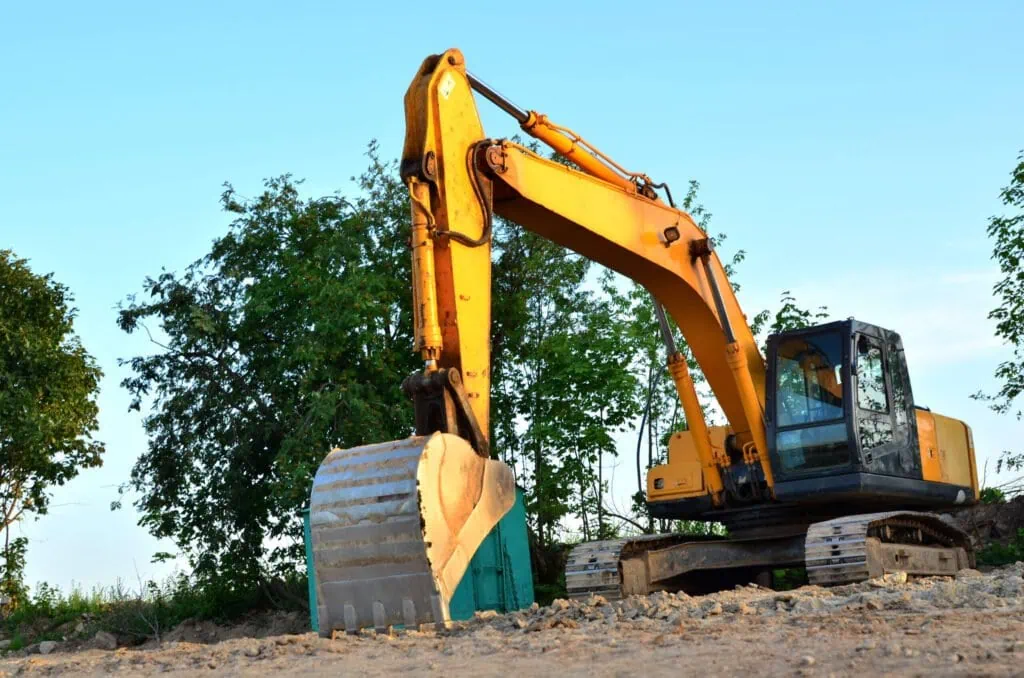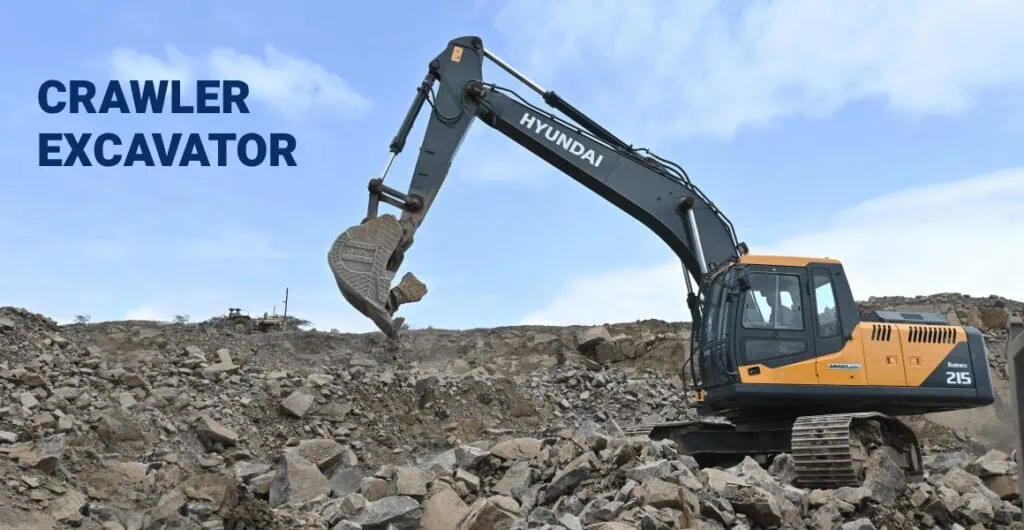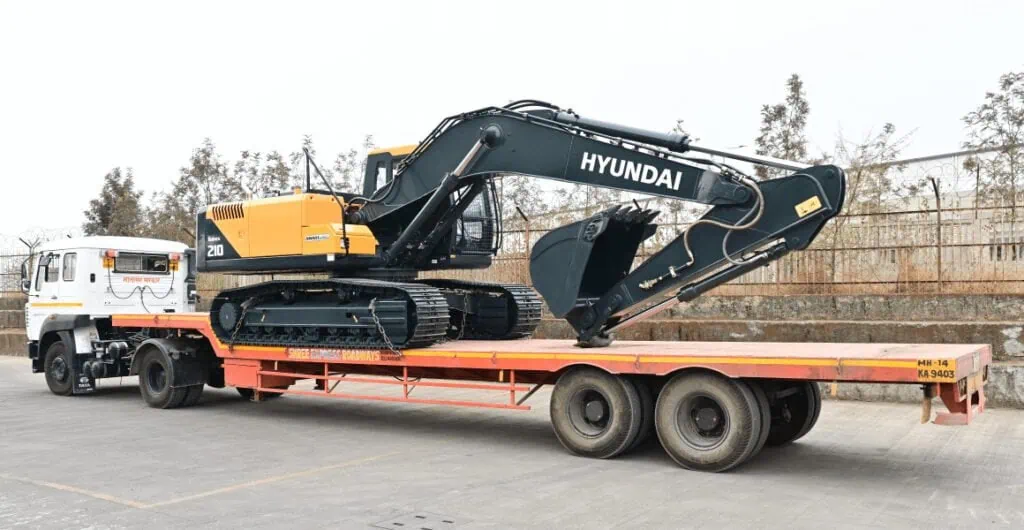Different types of excavator used become a centerpiece in almost every construction or engineering project, but knowing which types of excavator used (and its best use) is important in the selection of the correct equipment. In the following information, we’ll take a look at the most well-known types of excavators, what they do, and when to use each type.
Excavators are indispensable in construction projects but understanding the types of excavator used that they use is pivotal in selecting the right piece of equipment. With the right equipment, you can increase productivity and execute your projects with efficiency.
There are several types of excavator used, including crawler, wheeled, and mini excavators. Each type offers unique performance capabilities tailored to specific work requirements, helping you choose the best solution for your project.
In this article, I’ll walk through the different types of excavator used and how the various types are used.
Table of Contents
Toggle1,What Are Crawler Excavators in types of excavator used?
Crawler excavators are one of the most frequently types of excavator used and can move over a wide range of terrains and conditions.
Crawler excavators are known for their superior traction and stability, which makes them an essential piece of equipment when it comes to significant earthmoving and construction.
These excavators typically have large buckets, strong engines, and the ability to handle heavy-duty tasks. This makes them great if you have to work in soft, muddy ground. They are ideal for moving dirt, rocks, and other materials in construction, earthwork, and digging operations. In the world of the types of excavator used, a crawler excavator is essential when you must lift heavy loads or manipulate objects because of their stability and ability to do so. For example, they’re great for highway building and mining operations.
A crawler excavator is great because you can use it in various applications. You can attach “twist-on” pieces that allow the bucket to handle more than merely digging. While these attachments twist on and off, they allow you to grade with a bucket, lift pallets, or perform other tasks, in addition to digging and moving dirt.
Many crawler excavators come with advanced hydraulic systems, giving you even more control and efficiency when running the machine. While they may not be as fast as a wheeled excavator, a crawler excavator can perform better over various job site conditions. That capability is why they’re the most popular excavator used by contractors today.
Crawler excavators are highly versatile. You can attach everything from grapples, hammers, and augers to them so that you can do different kinds of work on the same job site. Moving the different attachments on and off quickly helps minimize downtime and creates more value from the machine in that specific work area. This is the most popular types of excavator used.

2,What Are Wheeled Excavators in types of excavator used?
One of the unique types of excavator used and primarily used in urban environments for various reasons is a wheeled excavator.
Wheeled excavators are fantastic for quickly moving from one side of town to the other to perform work or creating problems where you wouldn’t typically think you could use an excavator. For example, let’s say a farmer has to do some light excavation or pull somebody’s car out of the mud. Now he can use his mini-excavator/CT-LRT to solve the problem instead of waiting for someone to come and perform the job for him.
Wheeled excavators do exceptionally well on flat terrain. They offer speed and versatility, making them the perfect choice for industries where the jobs keep moving around, such as the DOT to move a mini-excavator to someplace to inspect a road or sewer. For landscapers who have light excavation work in multiple places, it’s nice to be able to drive your machine from one place to the next with your own towerable mini-excavator.
Wheeled excavators can get in and out with ease, and are small, so it is no problem for them to roll from one site to the next. Also, wheeled excavators can easily and safely maneuver around congested areas such as towns. Cost-wise, it is cheaper to transport a wheeled excavator in most cases, and they don’t require special permits like an oversized crawler. They are preferable over some of the other types of excavator used available.
Additionally, you can put the same types of attachments you put on a crawler to increase its functionality like digging, lifting, and even snow removal depending on where you are in the world. The variety of uses and the ability to switch attachments quickly allows you to increase the utility of a wheeled machine and be more efficient while focusing on the job at hand. So it’s very important to know the types of excavator used in market.

3,What Are Mini Excavators?
Mini excavators are a very popular types of excavator used and will get its category later on in this post and are a fantastic tool because they can work even in relatively tight surroundings.
Mini excavators are wonderful because they can work in tight areas, making them perfect for residential work and minor site development. They fit one of the important types of excavators.
It may be mini, but don’t let the little size fool you: it packs a big punch. Don’t let the small size fool you: it can do a lot of work. You can do a bunch of different tasks (digging, grading, etc.) using the attachments (buckets, thumbs, augers, etc.) these little machines can carry.
One thing to consider is how you plan to transport the machine. The size of most mini excavators makes them relatively easy to transport compared to larger varieties. Due to their ability to work well in small areas and fit into small spaces, mini excavators are an excellent option for people working in residential construction. There has to be a considerable amount of power available in a small space to do residential and small-scale work. This need for power and precision is why mini excavators have become so prevalent among the types of excavators used.
Mini excavators can do everything from digging foundations for homes to working on landscaping projects around a business or residential site. The great thing is that many mini excavators can fit through standard gates and doorways. Their ability to do delicate work is why mini excavators are so popular for people who are focused on doing quality work.

4,What Are Long Reach Excavators?
A long reach excavator is designed to work where you would need a long boom and stick. If you have a project where you have to work from a long distance, this would be the types of excavator used you would choose.
If you were clearing the side of a riverbank for a project, you would use the long reach excavator because you can stay on the shore, keep your machine safe, and use a super long stick to reach out and pull the bank in toward you to clear space to work around the river.
This types of excavator used has a long boom, arm, and bucket, so its reach is extended. It lets the operator extend high and far out to get to areas that are hard to reach. For example, a long reach excavator is good for deep excavation and dredging work; otherwise, it is beneficial when performing work in a location you cannot access easily or safely.
The long reach sticks maximize the operator’s ability to dig from a great distance, thereby helping to keep the machine safe. The longer stick allows you to work from a substantial distance away with your machine. The added efficiency and hydraulic control in the cab allow a long reach excavator to work well for you in situations where traditional machines might struggle.
Furthermore, with many environmental and other remediation projects, a long reach excavator allows for the removal of contaminated or unpleasant materials from a safe distance. Whether removing debris from a contaminated area or cleaning up junk from a waterway, a long reach excavator can be your best friend when it comes to efficiency and safety.

5,What Are Hydraulic Excavators?
Hydraulic excavators are widely used in every area of construction and development despite their challenging transportation and crew needs. No matter if you are involved in road construction or building a skyscraper, you will use a hydraulic excavator now and then.
You’ll use a hydraulic excavator if you have to solve problems in construction, building roads, or putting up a building. These are the cranes with tracks and the telescoping arms you have to transport on a trailer. All the excavators you can use in every construction type or industry fall under hydraulic. All the various attachments (multipurpose buckets, hammers, thumb attachments, augers, etc.) can fasten to a hydraulic excavator. Hydraulic excavators are my favorite types of excavator used machine.
A hydraulic excavator is a construction tool that meets just about any of the challenges when you are building something. Whether you are working on a construction site, building a skyscraper, or involved in road construction, just about every construction type or industry tool you can use is hydraulic. Whether you are grinding stumps in a forest or being an earth mover, a hydraulic excavator is your best types of excavator used.
The hydraulic system makes operation smooth and controlled so that with the right attachment the possibilities are extensive. Whether you need to use a hydraulic excavator for earth piling, land leveling or as a piling machine, downtown Manhattan or the middle of the Amazon, a hydraulic excavator is your tool of choice.
The hydraulic excavator also offers a cutting-edge feature. Many are being made today with GPS systems and telemetry systems similar to those found on dozers and scrapers. These systems give the operator and his team real-time machine data for monitoring machine performance and overall project progress. These data-gathering systems help operators maintain better control over their project costs and offer the ultimate system in project management.

6,What Is the Most Common Excavator?
The more common brands of hydraulic excavators are CAT and Komatsu. These brands exist all over the world. Whether you’re doing mining in China, excavating in Africa, or on a farm in Kansas, 95 percent of all the hydraulic excavators in the world are CAT and Komatsu. These are the world’s two most common brands of excavators.
A hydraulic excavator runs off hydraulics. If you want something to move in and out quickly, you use hydraulics. You want something to run up and down quickly, you use hydraulics. You want to put different attachments on to a bucket that twist on and off quickly, you use hydraulics. You can do anything in any kind of soil conditions with cats and Komatsus. These units are my favorite type of excavating machine.
Hydraulic excavators run off of hydraulics. Anything you can do with hydraulics that you want to move in and out quickly, run up and down quickly, can be done with hydraulics. Whether you want to put different attachments on to a bucket that twist on and off quickly, use hydraulics. Do anything you want to do in any type of soil conditions with CATs and Komatsus because they are my favorite types of excavator used.
CAT and Komatsu excavators are hydraulic. Anything you want to do quickly, you can do with hydraulics. You want to run something up and down quickly or put different attachments on the bucket that twist on and off quickly, use hydraulics. Anything you want to do in any type of soil conditions you can do with CATs and Komatsus because they are, by far, my favorite types of excavator used.
CAT and Komatsu excavators are well-known across the globe. They’re used in every type of mining, drilling, or excavation activity all over the world. Whether you’re mining for diamonds in Africa, excavating in the middle of a city or on a farm in Kansas, 95% of all the world’s hydraulic excavators are either CAT or Komatsu. These are the two most well-known brands in the world. These industry leading excavators stand out because of their outstanding fuel efficiency and durability. Also, they’re usually the most reliable and have the best parts availability and after-market support. Because of these factors, many contractors use CAT and Komatsu because they offer the best value for your money.

7,How Many Different Sizes of Excavators Are There?
There are four primary sizes of hydraulic excavators: mini, small, medium, and large-sized. Whether it’s a CAT or a Komatsu, they offer mini hydraulic excavators all the way up to the large hydraulic excavators.
Each size of hydraulic excavator (mini, small, medium, and large-sized) can be used for different scale jobs. Whether you need to dig a hole 3 feet deep or 300 feet deep, there is a size machine to fit your needs. Whether you are building a skyscraper or a house on the farm, there is the right size excavating machine for whatever you’re doing. Whether you are grinding stumps in a forest or earth moving doing deep sewer work, a hydraulic excavator is your best excavating machine to use
The four sizes of hydraulic excavators are mini, small, medium, and large. Whether it’s a CAT, a Komatsu, or some other brand; they offer mini-sized hydraulic excavators all the way up to large-sized hydraulic excavators. Whether you need to dig a hole three feet deep or 300 feet deep, there is a size machine to dig up your dirt. Whether you are building a skyscraper or a house on the farm, there is the right size hydraulic excavating machine to fit your needs. Whether you are grinding stumps in a forest or doing earth-moving to dig a deep sewer, a hydraulic excavator is the best excavating machine to use and also the best types of excavator used.
Different sizes allow contractors to have a machine that best fits their needs to do the job most efficiently and cost effectively. It’s also important to understand these categories when you start to plan your project
because you need to know what types of excavator used will be the best fit for the type of work you’re doing.
Additionally, the size of an excavator often corresponds with its lifting capacity and digging depth. These specifications are important for contractors because they need to choose the right equipment for tasks like trenching, grading, site preparation and more. By knowing about the different sizes of excavators and which size is best for your project, and choose the most suitable types of excavator used, you can use your equipment more effectively and be more productive.

Summary
Knowing the different types of excavator used is key for you as a contractor or engineer to understand. If you pick the right excavator based on size, based on functionality, and based on your operational requirements, your project will be more efficient and you will be more successful. Every types of excavator used has its strengths, so think through what you are trying to do before you make your selection.
There you have it. Whether you need the power of a crawler excavator, the mobility of a wheeled excavator, or the precision of a mini excavator, you now know your options and can make sure you have the best equipment for the job. Also you could contact with us to know more types of excavator used.